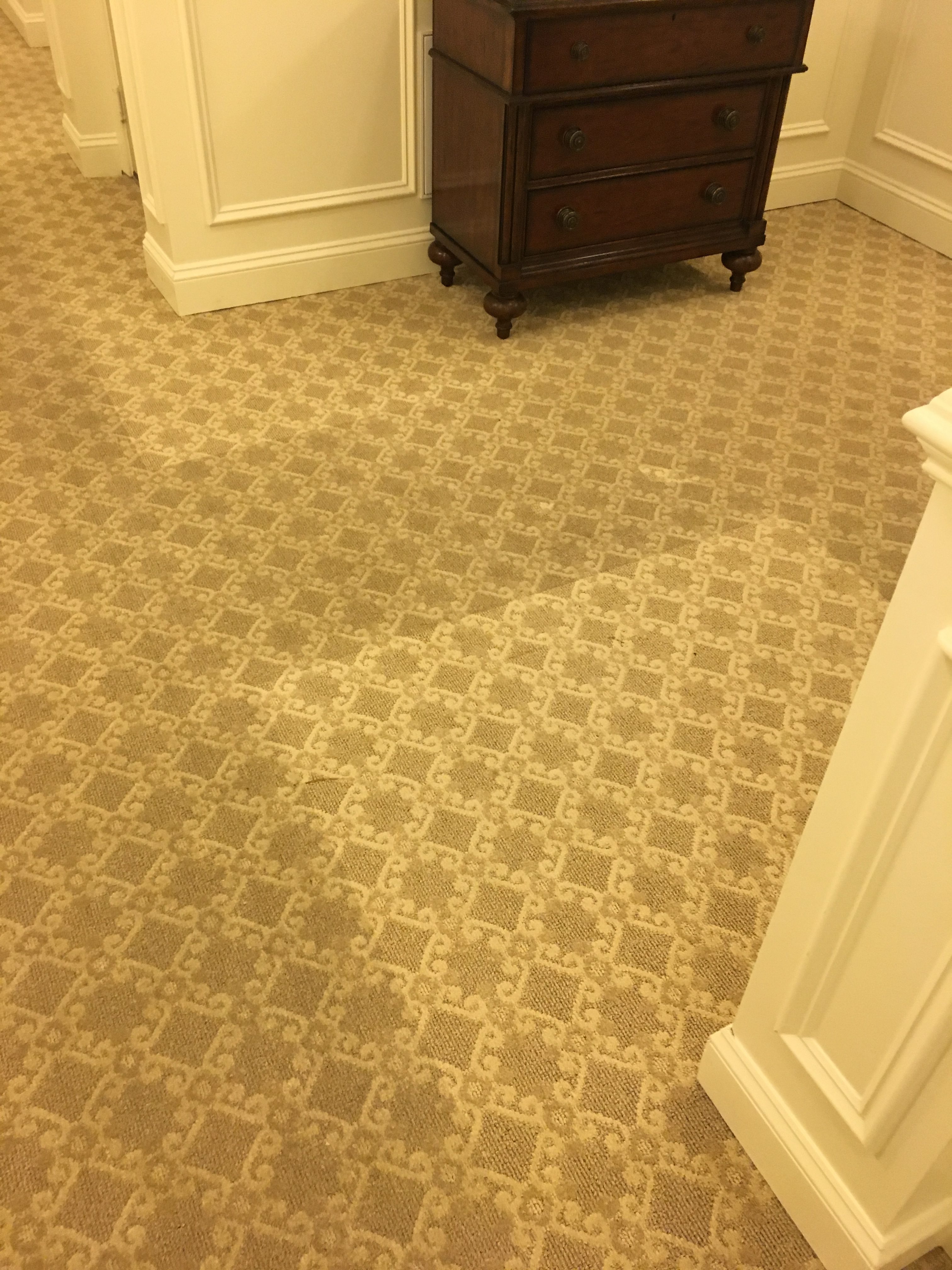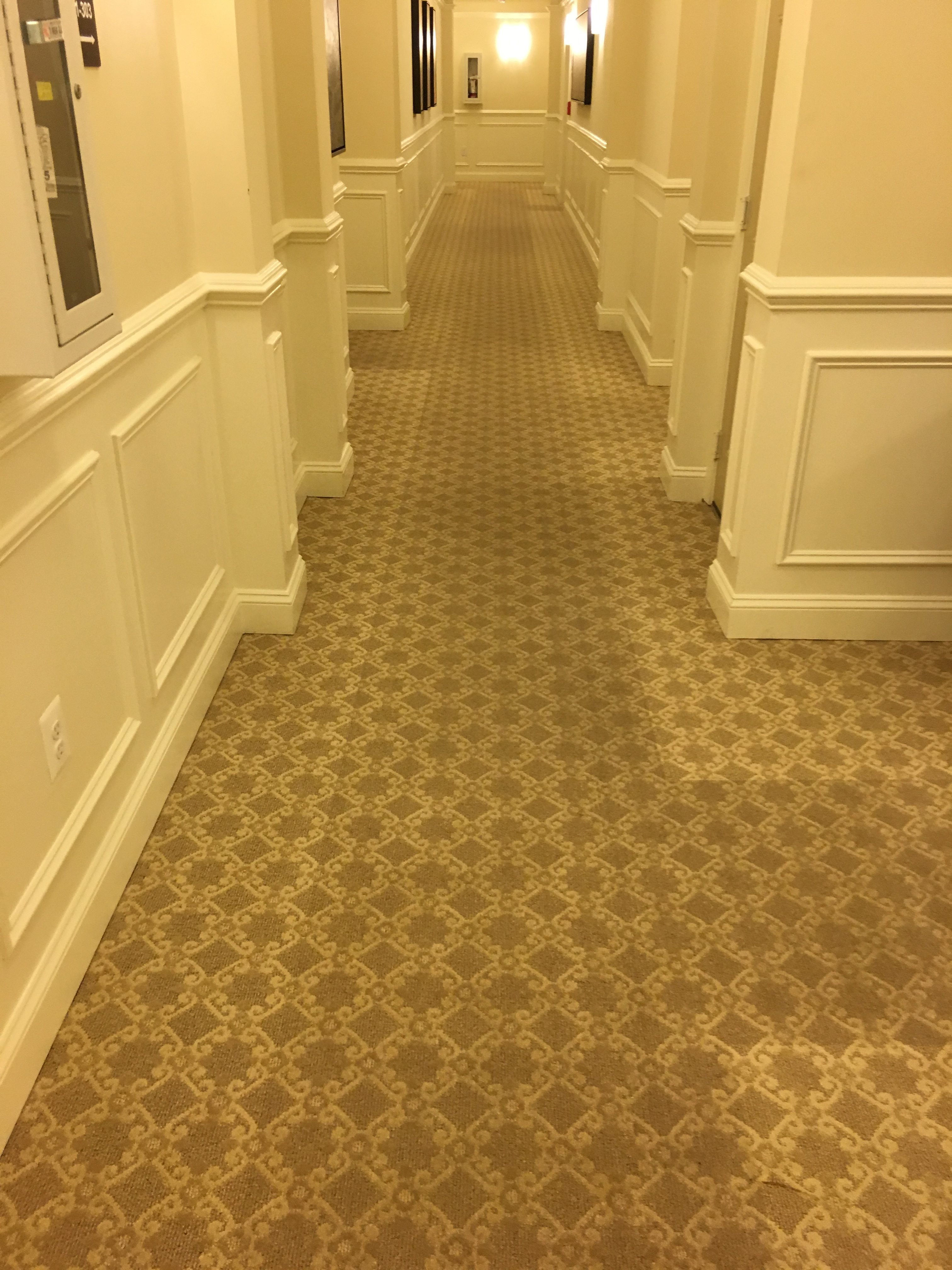Protecting carpet during construction is an absolute necessity. Too often carpet is installed during the construction phase. Why does this happen? It is simple…
- poor planning
- delivery mix ups & rushed jobs
- use during construction
- acclimation requirements
- installation schedules
We live in a world where after a decision is made everything “must be ready yesterday”. The trades really do not have time to do the job completely according to spec. How can a corner be cut with minimum risk? It’s the world we live in.
Years ago when I first started cleaning carpets I used to see rolled paper, plank boards, plywood or particle board set over a freshly installed carpet in commercial facilities. Carpet runners were common place. You would also see plastic, but it was loose or taped down. Of course the duck tape caused issues but some solvent and a piece of carpet could remove that easily…at least until sticky tape lines reappeared after a few months. Today there are different issues.

Quick and easy products used to protect carpet after installation from spills, traffic or construction debris are typically thin plastic rolls with a mastic or quick release adhesive on the back. This protective application of plastic is meant to easily stay in place after it is rolled out. It does a good job at this initially, but if it is installed too soon (on a direct glue down), it is left in place too long or experiences heavy traffic (typically associated with moving furniture etc)….it can transfer the mastic to the carpet making it tacky or sticky or cause fume fading (color loss of carpet fibers). Both of these issues are difficult and sometimes impossible to correct. Often the warranty is voided immediately when the manufacturer finds out.
It is important to know what you are placing on a carpet when your intention is protecting carpet during construction. Many carpet manufacturers do not recommend the use of plastic films used for carpet protection. Not knowing what the manufacture recommends could cost you extra time and money.
